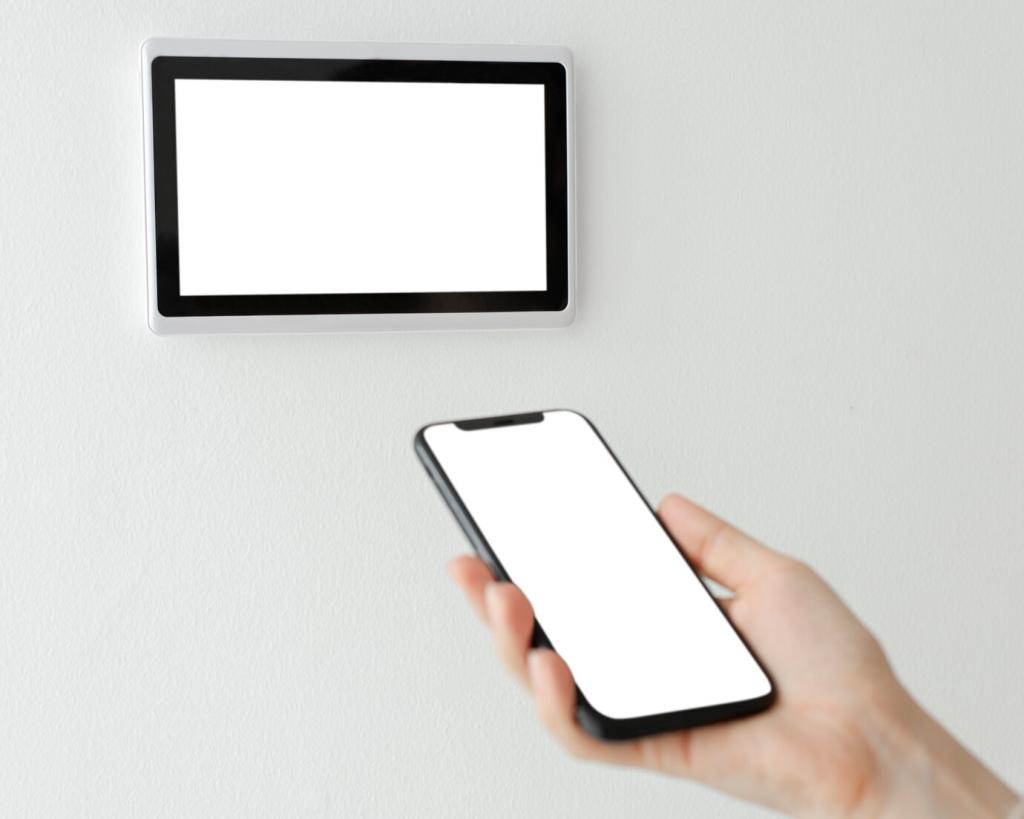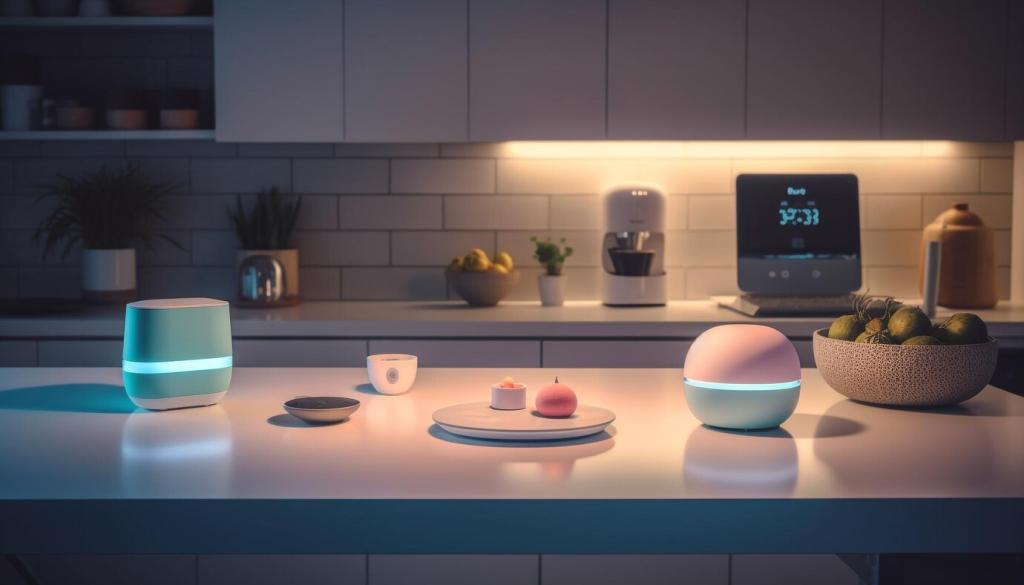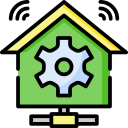The realm of smart home automation is evolving at a rapid pace, ushering in a new era where technology seamlessly integrates into daily living. From enhanced security systems to intuitive voice controls, the latest trends are redefining comfort, convenience, and efficiency in homes worldwide. Homeowners are eagerly adopting cutting-edge innovations that not only promise to simplify tasks but also enrich the overall living experience. As devices become more intelligent and interconnected, the future of smart homes looks increasingly personalized and accessible for every lifestyle.

Personalized Automation through AI Learning
AI-driven systems now have the capability to analyze routines continuously, adjusting lighting, temperature, or entertainment preferences based on observed habits. This learning process allows the system to recognize when residents leave for work, automatically securing the premises, or setting the ideal lighting ambiance in the evening. Over time, these adaptations become more refined, making everyday interactions almost effortless. As homes grow smarter, residents benefit from environments that anticipate their requirements without the need for manual control, fostering a truly personalized experience.
Predictive Maintenance and Smart Diagnostics
With AI integration, home automation systems can now monitor connected appliances and devices, identifying potential issues before they escalate into significant problems. For example, sensors in smart refrigerators can detect abnormal temperature fluctuations, prompting users to address possible malfunctions early. Similarly, AI-powered air conditioning units may predict filter replacements or servicing schedules based on usage patterns. This trend not only extends the lifespan of expensive appliances but also reduces maintenance costs and minimizes inconvenience by ensuring that essential systems operate optimally at all times.
Intelligent Energy Management
Energy efficiency is at the forefront of modern smart homes, and AI plays a crucial role in optimizing consumption. Intelligent thermostats and lighting systems, guided by algorithms, learn the household’s daily schedule and occupancy patterns. By dynamically adjusting temperatures and light levels, these systems minimize energy waste, resulting in lower utility bills and an environmentally friendly household. AI also facilitates integration with renewable energy sources and battery storage, ensuring seamless transitions and optimal utilization of available energy resources throughout the day.
Voice Control and Natural Language Processing
More Responsive Virtual Assistants
Advancements in voice recognition allow modern virtual assistants to filter out background noise and understand individual speech patterns with greater precision. This evolution means residents experience fewer errors when issuing commands, whether adjusting the thermostat, playing music, or controlling security features. Furthermore, multi-user support allows different family members to access personalized schedules and preferences, making shared spaces more accommodating for everyone. The seamless functionality offered by these assistants represents a significant milestone in frictionless home automation.


Intelligent Video Surveillance and Analytics
Contemporary security cameras, fortified by AI, do more than record footage. They analyze visual data in real time, distinguishing between family members, neighbors, and unfamiliar visitors. Systems are capable of recognizing delivery personnel or even alerting homeowners about unusual activity while filtering out false alarms such as passing animals or swaying branches. This smart surveillance minimizes unnecessary notifications and boosts genuine threat detection, making home monitoring systems both efficient and dependable.

Advanced Biometric Access Control
Modern smart homes often employ sophisticated biometric solutions like facial recognition, fingerprint scanning, and even voice identification to secure entry points. Unlike traditional keys or passwords, biometric markers are unique to individuals, significantly reducing the risk of unauthorized access. These technologies not only streamline entry for household members but also maintain detailed logs of activity, which can be invaluable for security audits or incident investigations. The adoption of biometric controls represents a pivotal advancement in balancing convenience with uncompromised protection.
Interconnected Ecosystems and Interoperability
Open-Source Platforms and Compatibility Standards
The push for open-source solutions and universal compatibility is reshaping how devices connect within a smart home. Initiatives like Matter, promoted by key industry players, establish foundational protocols that guarantee interoperability between brands. As a result, homeowners have greater freedom to mix and match devices, knowing they can be managed collectively without compatibility concerns. This movement is steering the industry away from siloed, proprietary systems towards a more inclusive, user-friendly environment.
Unified Control Hubs and Dashboards
Centralized control hubs act as command centers, aggregating the management of lighting, security, appliances, and climate control. These platforms offer intuitive dashboards, accessible both locally and remotely, granting users comprehensive oversight over their smart home. By consolidating controls into a single interface, these hubs streamline routine operations and reduce complexity, ensuring that even less tech-savvy individuals can fully utilize automation benefits. Over time, these dashboards have evolved with advanced customization and real-time updates, making them indispensable for orchestrating a truly harmonious smart living space.
Cross-Device Automation and Scene Creation
As interoperability improves, the creation of cross-device automation scenarios becomes increasingly sophisticated. Residents can tailor multi-step routines that span several device categories—such as activating security systems, adjusting lighting, and initiating entertainment—all triggered with a single command or scheduled event. The evolution of “scenes” allows for unique, experiential environments optimized for relaxation, work, or social gatherings. This rich interconnectivity enhances flexibility and encourages innovative usage, making the smart home greater than the sum of its parts.
Sustainable and Energy-Efficient Smart Homes
LED technology, coupled with intelligent automation systems, is revolutionizing household lighting. Homeowners now benefit from bulbs and fixtures that respond to movement, ambient light conditions, or occupancy, reducing unnecessary energy consumption. Smart lighting networks are also capable of adjusting color temperatures throughout the day, mimicking natural sunlight to support healthier circadian rhythms. Long-term, these improvements contribute to significant energy savings, reduced utility bills, and a more sustainable lifestyle that prioritizes both well-being and environmental stewardship.

Health and Wellness Enhancements
Air Quality and Environmental Monitoring
Smart sensors now provide real-time analysis of indoor air quality, detecting pollutants such as volatile organic compounds, carbon dioxide levels, and particulate matter. Some systems automatically trigger air purifiers or ventilators when thresholds are exceeded, ensuring a consistently healthy living environment. Additionally, advanced sensors monitor humidity and temperature, alerting homeowners to conditions that might promote mold or allergen proliferation. Maintaining optimal indoor air quality is particularly beneficial for individuals with respiratory challenges or allergies, making this technology invaluable for health-conscious households.
Circadian Lighting and Sleep Support
Lighting solutions integrated into smart homes now go far beyond illumination; they align with natural circadian rhythms to promote healthy sleep patterns. Systems adjust color temperature and brightness throughout the day, simulating sunrise and sunset to help regulate the body’s internal clock. Smart shades complement this process by controlling natural light exposure. Enhanced sleep environments lead to better rest, improved mood, and increased productivity, underlining the holistic approach modern automation brings to wellness.
Fitness and Assisted Living Automation
Smart homes increasingly support active lifestyles and assist with independent living for seniors or individuals with mobility challenges. Connected fitness equipment tracks activity and heart rate, offering personalized routines and real-time feedback. Meanwhile, assisted living features such as automated medication reminders, emergency alerts, and remote monitoring bring peace of mind to residents and caregivers alike. These solutions collectively empower users to lead healthier, safer, and more autonomous lives within the comfort of their digitally enhanced homes.

Multi-Room Audio and Video Integration
Today’s smart homes are equipped with audio and video systems that synchronize content across multiple rooms seamlessly. Residents can start a playlist in the kitchen and have it follow them into the living room, or synchronize video content for a cohesive movie night experience. These integrated systems respond to voice commands, app controls, or preset scenes, ensuring content accessibility wherever and whenever desired. The convenience and flexibility afforded by such setups redefine in-home entertainment, catering to every mood, occasion, or household member.
Dynamic Ambient Experiences
Modern automation platforms now orchestrate sophisticated ambient scenes by combining lighting, music, scent diffusers, and projection technology. A single command can transform a living room into a cozy home theater, a tranquil yoga studio, or a festive party venue. Residents benefit from customized sensory environments that elevate routines and create memorable experiences for themselves and their guests. These ambient solutions reflect a growing demand for immersive, mood-enhancing living spaces that adapt effortlessly to changing needs.
Smart Gaming and Leisure Integration
The fusion of gaming consoles and leisure systems with smart home infrastructure enables heightened interactivity and comfort. Lighting adjusts to gameplay scenes, thermostats maintain ideal room temperatures during extended gaming sessions, and voice assistants handle in-game controls or order snacks. Beyond traditional entertainment, integration extends to activities like virtual reality workouts, meditation, and interactive storytelling, offering endless possibilities for recreation and relaxation. This level of integration showcases the vast potential for lifestyle innovation within today’s connected homes.
